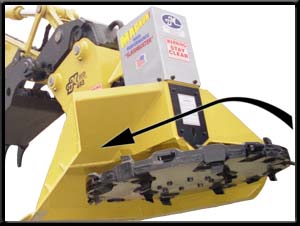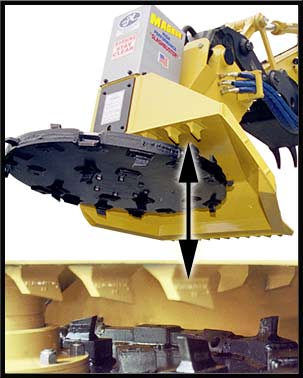The shroud funnels material into itself. As the mulching disk rotates the "S-7" teeth tend to pull material into the funnel. From there it is directed by force and inertia further inside the shroud.
Inside the shroud, material grinds between stationary and rotating teeth. This mulching action helps reduce the material in one pass rather than going over it repeatedly. |
 The direction of the rotating disk forces material into the mulching shroud. |
This action dramatically improves production rates. A skilled operator can cut shrubs, small trees and tree tops and automatically force them into the funnel are sucked inside the shroud. This takes practice but when done right the large material meets with the massive force of the rotating disk and is chewed up into small pieces almost instantaneously.
The mulching shroud chews or "masticates" material between a narrow clearance of opposing teeth. Instead of being cut only once the material is ideally cut and forced into opposing teeth, cut and forced again back into the rotating teeth. This chewing action is faster and produces a finer end product than typical cutter heads. |

Closeup showing yellow fixed teeth opposing the black rotating teeth inside the shroud. |